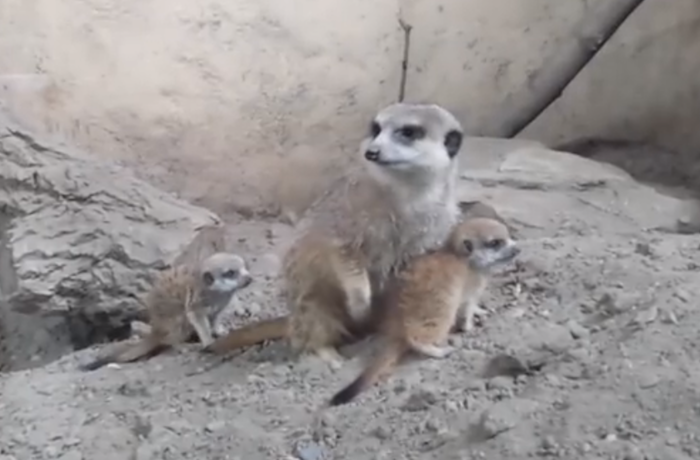If home is where the heart is, Wisdom is living proof.
At 68, Wisdom is the world’s oldest known wild bird.
And, the Laysan albatross has returned once again to Midway Atoll National Wildlife Refuge — the place she was born — lay another egg and raise yet another chick.
She done this 30 to 36 times. Give or take.
But it’s tough to keep track of such a prolific mother.
She’s Baaaaaack! Wisdom – world’s oldest known wild bird- returned to Midway Atoll NWR on 11/29 and laid an egg! Wisdom was first identified and banded by biologists as an adult in 1956 – making her at LEAST 6⃣8⃣ years old! #Wisdom (1) https://t.co/Iv8GZr5os9 pic.twitter.com/fC3sbHxmF7
— USFWS Pacific Region (@USFWSPacific) December 5, 2018
Wisdom was spotted once again at her traditional nest site on Nov. 29.
Biologists have confirmed she has laid an egg there.
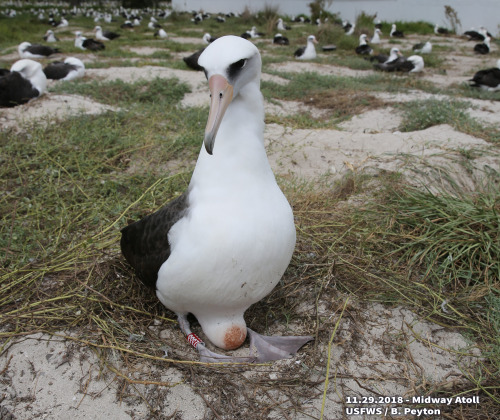
Wisdom was first banded as an adult in 1956.
At the time, biologist Chandler Robbins pegged her at around 5-years-old.
And it was only because Midway Island was a strategic outpost for the U.S. Navy, and Wisdom happened to nest next to one of the barracks, that she was even on anybody’s radar.
Wisdom was first banded by biologist Chandler Robbins. In 2002, Robbins returned to Midway to find the birds he banded in those early years. He “discovered” Wisdom still there at the same nest site. Over 250,000 birds have been banded on Midway Atoll! #Wisdom (2)
📸USFWS pic.twitter.com/AnKm5mR4SU
— USFWS Pacific Region (@USFWSPacific) December 5, 2018
Wisdom spends most of her life at sea.
She flies for days over the Pacific Ocean and takes breaks on waves to feast on squid and fish eggs.
But Wisdom met her mate, Akeakamai, on Midway.
And once the pair is bonded, they are mates for life.

Wisdom and Akeakamai have been returning to the same nest site every year since 2006 to lay and hatch an egg.
“Biologists call this type of behavior ‘nest site fidelity,’ and it makes preserving places with large colonies of birds critically important for the future survival of seabirds like Wisdom,” according to the U.S. Fish and Wildlife Service Pacific Region.
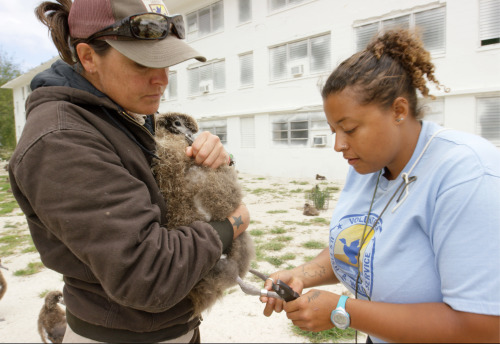
Wisdom’s chicks have done well.
Yes they do, although not every year. Albatross chicks have a pretty high mortality rate, but one of her banded chicks actually showed up near her nest last year. Which was pretty exciting. That chick had hatched in 2001. https://t.co/aNHZHdr9V4
— USFWS Pacific Region (@USFWSPacific) December 6, 2018
That 2001 chick, which returned to a nest site just a few feet from Wisdom’s current nest, was the first time a returning chick of hers has been documented.
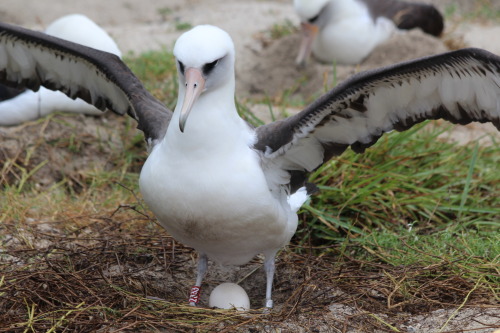
Midway is heaven for birders.
“You are bombarded by the sounds and smells of 1.2 million albatross and over three million seabirds,” Beth Flint, a biologist with the USFWS explained in a statement. “Every square foot of land, and much of the ground underfoot is occupied by a nesting bird. Itʻs like another world.”
These Pacific islands are home to colony of millions of seabirds who benefit from one of the world’s largest protected areas, Papahānaumokuākea Marine National Monument.
Midway Atoll is home to over 70% of the world’s Laysan Albatross! Most albatross return to the place they were born to breed and raise their young. So it is likely that Wisdom and her long term mate Akeakamai are surrounded by family members. Welcome home #Wisdom (3) pic.twitter.com/BJRN5iVCo9
— USFWS Pacific Region (@USFWSPacific) December 5, 2018
Albatross typically lay an egg every other year.
Despite her age, Wisdom has been laying an egg annually and has outlived at least one partner.
She and Akeakaima, which means “lover of wisdom,” will incubate their single egg for a little over two months.
The parents will take turns keeping it warm and searching for food.
Then, when the chick hatches, they’ll raise it for another five months before it will leave the nest.
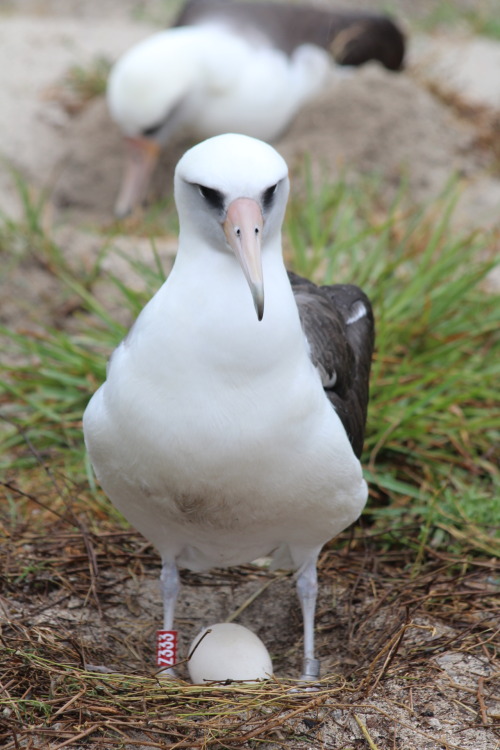
“Midway Atoll’s habitat doesn’t just contain millions of birds, it contains countless generations and families of albatrosses,” Kelly Goodale, U.S. Fish and Wildlife Service Refuge Biologist, said in a statement. “If you can imagine when Wisdom returns home she is likely surrounded by what were once her chicks and potentially their chicks.”
You can see more photos of Wisdom in this extensive photo album.
Photos U.S. Fish and Wildlife Service Pacific Region


